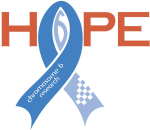
Het chromosoom 6 onderzoek

NEW website in English at http://www.chromosome6.org
Waarom willen we dit onderzoek doen?
Chromosoomveranderingen, zoals veranderingen van chromosoom 6, zijn een belangrijke oorzaak voor aangeboren problemen en ontwikkelingsachterstand bij kinderen. Kennis over de effecten van deze chromosoomveranderingen zijn belangrijk voor een zo goed mogelijke begeleiding en behandeling van deze kinderen.
Als groep zijn chromosoom 6 veranderingen niet zeldzaam, maar omdat er veel verschillende chromosoomveranderingen mogelijk zijn, is er voor iedere afzonderlijke aandoening weinig informatie beschikbaar. Dit zorgt voor onzekerheid bij ouders en dokters en daardoor suboptimale begeleiding van deze kinderen. Vanuit zowel ouders als hulpverleners is er dus behoefte aan meer informatie, toegespitst op de specifieke chromosoomafwijking van het kind.
Wat is het doel van dit onderzoek?
In dit onderzoek willen we de exacte veranderingen van chromosoom 6 (het genotype) vergelijken met het effect dat deze veranderingen hebben op het uiterlijk en andere klinische kenmerken van het kind (het fenotype). Op deze manier willen we verschillende kenmerken proberen te koppelen aan specifieke gebieden van chromosoom 6. Door dit te doen kunnen we mogelijk voorspellen welk klinisch effect bepaalde deleties (ontbreken van chromosoom 6 materiaal) en duplicaties (teveel aan chromosoom 6 materiaal) hebben. Daarnaast hopen we meer inzicht te krijgen in de functies van de vele genen die op chromosoom 6 liggen.
Uiteindelijk willen we een gedetailleerde genotype-fenotype kaart maken van chromosoom 6. Deze kaart kan gebruikt worden om patiënten en hun familie op maat voor te lichten over de toekomstperspectieven, waaronder ontwikkelingsmogelijkheden en te verwachten bijkomende problemen van hun kind, zodat begeleiding en onderzoeken op maat aangeboden kunnen worden.
Deze genotype-fenotype kaart zal worden gebruikt om patiënten en ouders via een interactieve website voor te lichten. Op die website komen filmpjes met algemene uitleg over chromosomen en over het gebruik van de website. En natuurlijk het meest belangrijke: een grafische voorstelling van chromosoom 6 waarop ingezoomd kan worden. Door het selecteren van een regio en het aangeven of er sprake is van een deletie of duplicatie, verschijnen verschillende soorten informatie: klinische kenmerken, onderzoek adviezen, handige links en informatie over de belangrijkste genen in het gebied.
Wat is er al gedaan?
Een moeder van een kind met een chromosoom 6 afwijking informeerde ons over de actieve internationale chromosoom 6 patiëntenvereniging op Facebook. Een grote groep ouders heeft zich op die Facebook groep verzameld en de moeder vroeg ons of wij geen onderzoek wilden doen binnen deze groep. We hebben een onderzoeksprotocol geschreven en een uitgebreide vragenlijst samen gesteld. Via de moeder hebben we het idee voor het onderzoek naar chromosoom 6 deleties en duplicaties gelanceerd op Facebook. Het onderzoek werd enthousiast verwelkomd en binnen enkele weken waren er meer dan 140 aanmeldingen. Samen met deze ouders is het al gelukt om van een ongekend groot aantal kinderen gedetailleerde informatie te verzamelen over zowel het genotype (exacte chromosoom 6 verandering) als het fenotype (aangeboren problemen, ontwikkeling, gedrag, etc.) van deleties van de lange arm van chromosoom 6.
De gegevens uit dit onderzoek hebben ons al enkele nieuwe inzichten gegeven over functies van bepaalde genen en welke ontwikkelingsproblemen er verwacht kunnen worden.
Hoe gaan we verder?
Verder onderzoek van deze reeds verzamelde gegevens zal meer interessante informatie opleveren. Daarnaast zijn er meer ouders die graag mee willen doen met het onderzoek, daardoor zullen wij in staat zijn om nog meer gegevens te verzamelen en zo chromosoom 6 nog beter in kaart te brengen.
Door de analyse van al deze gegevens en door gegevens uit andere databases en literatuur toe te voegen zullen we in staat zijn een gedetailleerde genotype-fenotype kaart te maken van chromosoom 6.
Wat hebben we daar voor nodig?
Om het vervolg van dit onderzoek mogelijk te maken hebben we naast tijd ook geld nodig. Daarom zijn we druk bezig met het aanvragen van subsidies. Daarnaast zijn enkele actieve ouders bezig met het inzamelen van geld voor het onderzoek door middel van sponsoring. Ook op die manier blijft het een onderzoek door en voor ouders.
Oproep van ouders, Fondsenwerving
Video of Conny van Ravenswaaij discussing her C6 research taken in Chicago (Nov 2015)
Zie ook Chromosoom 6 Nieuws
Voor meer informatie
Over dit project: neem aub contact op met prof.dr. Conny van Ravenswaaij, email, haar onderzoek
Twitter: Volg @c6study op Twitter, https://twitter.com/c6study
Ouderverenigingen
Unique (based in UK) is a source of information and support to families and individuals affected by any rare chromosome disorder and to the professionals who work with them Unique
Oudernetwerk Zeldzaam (in het nederlands) is er voor ouders en kinderen Zeldzaam
Facebook: Er is ook een Facebook groep van ouders met een kind met een chromosoom 6 afwijking.
| Laatst gewijzigd: | 11 maart 2025 14:32 |
